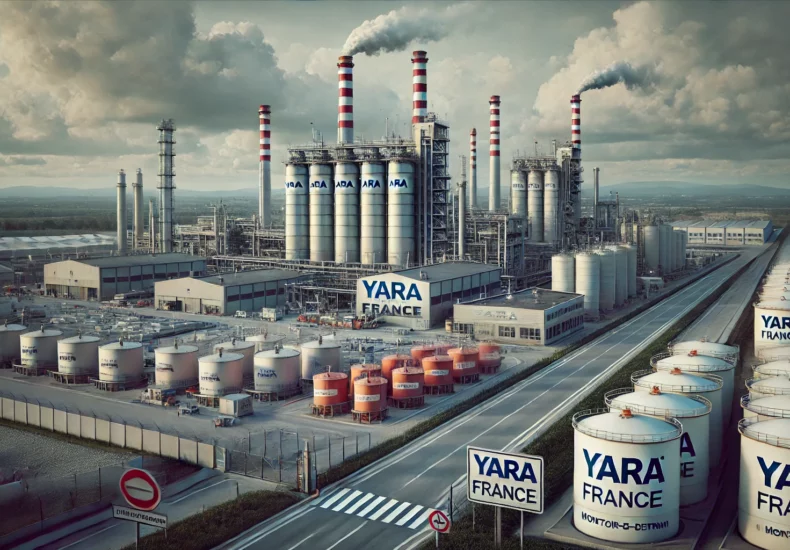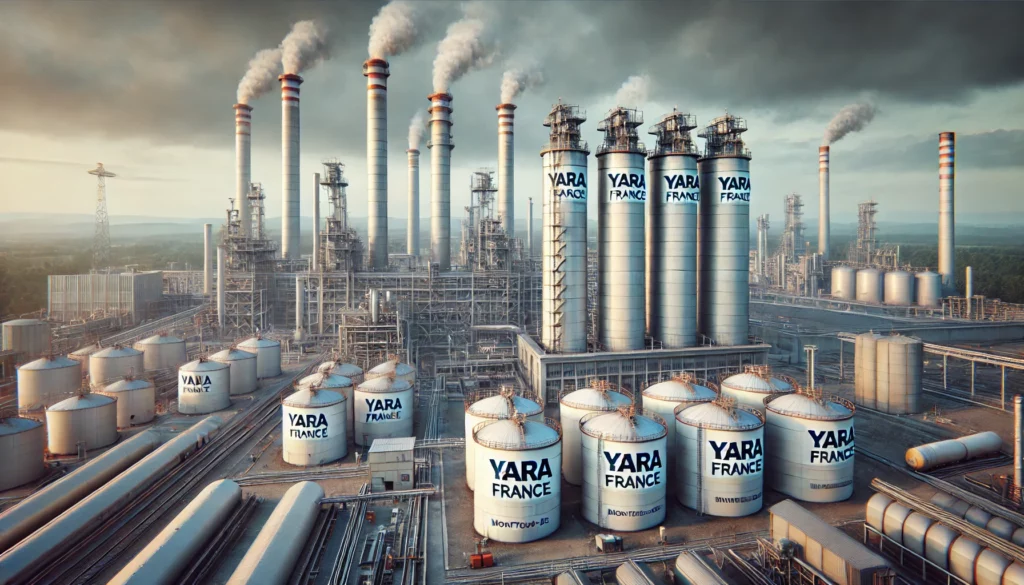
Montoir-de-Bretagne: the toxic shadow of the Yara fiasco persists
The closure of the Yara plant in Montoir-de-Bretagne (Loire-Atlantique) could have marked the end of a dark chapter for local residents and environmentalists. But behind the now-closed gates, a toxic legacy persists: the storage of highly flammable chemicals, alongside other high-risk industrial facilities, continues to pose a threat to the region.
A plant that turns the page, but leaves the risks open
In November 2024, anger rumbled outside the Saint-Nazaire sub-prefecture. A few dozen demonstrators, local residents and environmental associations, denounced the attitude of a multinational deemed irresponsible. Thierry Noguet, mayor of Montoir-de-Bretagne, did not mince his words: “Yara is a company that has been flouting environmental rules for years. Today, it is closing its plant without resolving the problems it has created.
A high-risk warehouse in the heart of a sensitive industrial basin
Yara, the world’s number one fertilizer manufacturer, has chosen to redirect its investments to the United States, attracted by American public subsidies and more competitive energy costs. But by leaving its storage infrastructures in place, the company is keeping a sword of Damocles hanging over the region.
The Yara plant in Montoir-de-Bretagne is not isolated. It shares its immediate environment with other facilities handling chemicals or highly flammable materials. This proximity makes the area a veritable explosive cocktail. “If an accident were to happen here, it would be a major industrial disaster,” warns a local risk management expert, who prefers to remain anonymous.
Local residents, aware of this latent danger, fear the worst. “We’re told that production has stopped, but what’s stored here is just as worrying,” says a resident and member of a local association. “Who guarantees the safety of these installations in the future, with a reduced human presence on the site?”

Multiple consequences: ecological, social and strategic
This closure is not just an environmental issue. It is accompanied by the loss of 130 of the plant’s 170 jobs. For CGT delegate Philippe Nicolas, the feeling is bitter: “We’re sacrificing jobs and losing part of our agricultural sovereignty. Now we’re going to import even more fertilizers, notably from Russia, at a time when we’re calling for reindustrialization.”
In the background, ecological impact remains a major concern. With stocks being kept on site, water and air pollution, already denounced for years, is likely to persist. “Stopping production does not erase the damage. Worse still, the danger persists for future generations,” adds Manon Castagné.
A question of responsibility and safety
The closure of Yara in Montoir-de-Bretagne raises questions that go beyond the boundaries of the commune: how should disused industrial sites be managed? Who should take responsibility for the risks associated with the storage of hazardous materials?
In Loire-Atlantique, residents and associations are waiting for answers. For the time being, the toxic legacy left by Yara remains an unresolved challenge, a silent spectre in an industrial landscape already under strain.
Marie-Aline Le Cler – President of ADZRP, the Association Dongeoise des Zones à Risques et du PPRT (for Technological Risk Prevention Plan) – never wanted the Yara plant in Montoir-de Bretagne to close. It was simply calling for the plant to be brought into compliance. Speaking to Nordic-Paradox, she made no secret of her disappointment and fear of the worst, which hangs over the heads of local residents more than ever, despite the interruption in production.
“We had the opportunity to talk to rope access technicians, experts in industrial structures. They worked there on scaffolding for several months at a time, and by the time they’d finished, their tools were considerably affected by the pollution, completely corroded by chemicals”, Marie-Aline Le Cler points out.
Although Planktonid had pulled out all the stops to help clean up Yara’s wastewater by investing heavily in an environmentally-friendly and effective microalgae-based solution, it was not the only company to have to wipe the slate clean in an attempt to solve the Norwegian company’s water decontamination problems. AlgoSource, working in the same sector, was also forced to give up in the face of Nicolas Broutin and his firm’s behavior.
“It’s well known that Nicolas Broutin has a great ability to place himself with politicians and other influential figures. This comes in very handy when it comes to keeping Yara’s dark side under wraps,” adds Marie-Aline. The problem is when companies don’t respect regulations and disregard the neighborhood.
“It’s totally irresponsible to put a hydrogen plant on the outskirts of Yara, when all you have to do is cross the road,” insists the President of ADZRP. When we see the damage caused by the AZF plant, with “only 300 tonnes of ammonium nitrate”, we can imagine, tomorrow, the potential catastrophe coming from Yara with their authorization to store up to 112,000 tonnes.
In addition, right next to Yara, there’s also an LNG terminal and the Total refinery nearby. “Marie-Aline insists: “With hydrogen projects on the horizon, although they will play a decisive role in the world’s energy strategy, the safety of the population must not be forgotten, and entire territories must not be sacrificed, as is already the case here.
We have already reached a 42% excess mortality rate among men under 65 due to cancer. An epidemiological study, which has been requested for years, has still not been launched. The region’s real-estate crisis is pushing young couples working in the area to settle in this high-risk zone, which is still much cheaper than elsewhere, and that’s dramatic,” she adds in total dejection…
Archives
Calendar
| M | T | W | T | F | S | S |
|---|---|---|---|---|---|---|
| 1 | 2 | 3 | 4 | 5 | 6 | |
| 7 | 8 | 9 | 10 | 11 | 12 | 13 |
| 14 | 15 | 16 | 17 | 18 | 19 | 20 |
| 21 | 22 | 23 | 24 | 25 | 26 | 27 |
| 28 | 29 | 30 | ||||